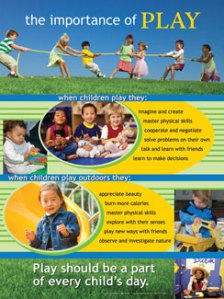An article featured by the Washington Post has been making its way through social media lately. The article, “A Very Scary Headlines about Kindergartners”, can be found here.
What this article, and the several (listed later) it references, brings attention to is the effect Common Core and academics has had on kindergarten in recent years. This is my second year teaching kindergarten. I am teaching skills and strategies that I remember from my first grade lesson plans five years ago. Expectations are high. While that can be a good thing – students always surprise you with their capabilities. The negative side to high expectations is that five and six year olds begin experiencing the “stress” of school from the very beginning, possibly fostering a dislike for school and altering their academic careers.
I love what I do – absolutely, positively. But, let’s be honest – teaching kindergarten is a HUGE responsibility. More often than not, my classroom is the first experience children have with the public school system. My classroom is their first chance to “do school”. Many come from day care programs, but they are not the same. Their little brains become overwhelmed with routines and socialization – and then we throw academics on top of that. I sincerely believe that kindergarten in my classroom can factor in to how a child feels about school. I take that to heart. I want my students to LOVE school! I want them to feel successful and confident and proud.
After some days, I wonder if every child left feeling that way. Fountas and Pinnell have had to change their reading level chart. What was once considered on or above level at the end of kindergarten (level B) is now considered below level after the second nine weeks. To be on grade level at the end of kindergarten, Fountas and Pinnell (and my school system) say that students should be reading at level D. You and I both know that some kiddos just aren’t ready to read in November, December, or January. They may jump on the reading train in March and as a teacher, you’re ecstatic. And as students, they are ecstatic because they can finally read all by themselves! But some of that joy gets stolen when at the end of the year, all of their hard work still doesn’t seem good enough. They end the year at level B and you’re worried they will struggle in first grade. Common core says teach them how to decompose numbers into tens and ones. Well, Sarah can only count to ten with confidence. How will she feel after a day of working with numbers larger than ten in a complex way? High expectations are not all bad, but what gets pushed to the wayside is the developmental appropriateness of standards.
The designers and writers of assessments and standards do not seem to take into account the age of the child – and where he or she is at developmentally – when putting forth requirements. One of the first classes of my teaching program was on child development. Obviously, this stuff is important! For example, five and six year olds are very egocentric still. Everything is about them, their families, their lives. The entire world is their world. Anything outside of their bubble is foreign. So if Piaget and others taught me this in undergrad, why am I being asked to expect my students to understand the concepts of states, countries, and continents at ages five, six, and seven? Do I love to teach about these concepts? Do we love exploring about other places? Of course! The difficulty lies in ASSESSING these developmentally inappropriate skills. I could go on and on about this – but I’d rather focus on play.
Play is losing its place in our kindergarten classrooms. We all try to play. We play to learn. My students have voice and choice in the classroom and learn through a variety of ways. We go off on tangents to answer questions. We play hands on games, explore, ask questions, research, build, create, use iPad apps, write, color, stamp, cut, sort, and experiment. Currently, I’m making a conscious effort to provide more opportunities to play for play.
We play at recess, yes. In the past couple weeks, I’ve hung up my “whistle” and loosened the reins a little. Unfortunately, I have been worried about injuries on the playground and have come to realize I was making recess less fun – for me and the students. “Make safe choices” is our new philosophy on the playground. So if a student is running up the slide or throwing sticks – he might get hurt. If he gets hurt, then we will have a discussion about the safety of his choices. My reflections on recess and play led me to see that recess was not always a break from the classroom if I had to continue redirecting behaviors on the playground. Tattling has decreased and students are getting more energy out.
We are also fortunate enough to still have “nonacademic” centers in our classroom. Students are able to invent and pretend in the home living, block/cars, and art centers. The kitchen is a kitchen, a barber shop, a store, a house, an animal shelter. Students are moms, dads, babies, and pets. Blocks become airplanes, rocket ships, bridges, ships, and roads. Construction paper transforms into robots, hats, gifts, and decorations for our room. The noise level during choice time is louder than other times in our classroom. This is an adjustment and also a fine line. Our class if filled with friends who take a mile when you give them an inch. We talk about procedures and what being at a center looks like and sounds like. We sit in time out when we can’t respect the space of others. We make messes – and then learn we need to clean them up.
Through play, for the sake of playing, we take care of our emotional selves. We develop life long skills that will make us happy human beings, successful human beings. We form friendships and develop talents. We find out our likes and dislikes, our strengths and some of our weaknesses.
We gain so much – and none of it can be assessed.
How do you incorporate play into your day?
Referenced articles:
http://www.oregonlive.com/opinion/index.ssf/2014/01/kindergarten_test_results_a_so.html
http://curry.virginia.edu/uploads/resourceLibrary/20_Bassok_Is_Kindergarten_The_New_First_Grade.pdf




This post echos my thoughts this afternoon. I had an intense conversation with a coworker about keeping kindergarten developmentally appropriate. I stress so much about making sure everything fits into my day, and I feel like I push my students from the time they enter my classroom. After my conversation this afternoon, I added a note to rethink my plans to make them developmentally appropriate to my to-do list for tonight. After reading your post, I just know I have some work to do.
Thank you for sharing your thoughts! I appreciate your point of view!
Thank you! I have been teaching less than 10 years and each year I find myself changing and adapting. I find it very exciting and I’m glad I can make these changes even though it can be difficult. I always keep my students’ best interests at heart and try to take care of them as people first and students second. If their emotional and physical needs are not being met, true learning of academics cannot take place. 🙂
You made a great point; the developmental appropriateness of CC standards is certainly in question. What adds to my displeasure with this trend is that the schools that are first to do away with play are often those that serve students from families with low income. The rational often being that test scores are so low that those minutes are needed for instruction. In the end I think it’s a formula that hurts the poor even more by making school an even more disenchanting experience. Kids need to play.
Exactly!